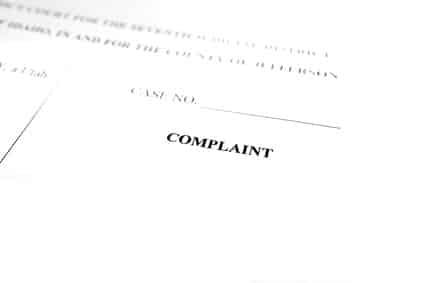Navigating a Lawsuit Series Continued
Welcome to blog #2 of our Navigating a Lawsuit series. In this week’s blog we will discuss petitions; specifically, where to file a petition, how to file a petition, and what to include in a petition.
The purpose of a petition is to define the issues for trial. It should give fair notice of the facts relied on, enabling the defendant to prepare a defense.
What is Included in the Petition?
Texas law requires the Plaintiff to include specific items in her petition. These specific items include: discovery control plan; specific statement of relief; parties; cause of action; damages;
prayer; and signature. You must also complete and file a case information sheet. This document is separate from the petition, though it contains much of the same information.
What is a Discovery Control Plan?
In the first numbered paragraph, the plaintiff must allege whether discovery is intended to be conducted under Level 1, 2, or 3 of Texas Rule of Civil Procedure 190. The level designated for the discovery control plan must relate to the type of suit and the amount of damages.
Determining which discovery control plan applies to your case includes many considerations, which will be discussed in depth in a later blog in this series.
How Do I State a Specific Statement of Relief?
The pleading must include one of the following statements:
- Plaintiff seeks only monetary relief of $100,000 or less, including damages of any kind, penalties, costs, expenses, prejudgment interest, and attorney fees.
- Plaintiff seeks monetary relief of $100,000 or less and nonmonetary relief.
- Plaintiff seeks monetary relief over $100,000 but not more than $200,000.
- Plaintiff seeks monetary relief over $200,000 but not more than $1,000,000.
- Plaintiff seeks monetary relief over $1,000,000.
See—Tex. R. Civ. P. 47(c)(1)-(5)
What Party Information Do I Include?
A person or entity is not a party to a lawsuit unless named as a party. The petition should state the full names of the parties and allege the suing party’s capacity in one of the early paragraphs under a section titled “Parties.” The petition must state the residence of each party, if it is known. While a street address is not necessary, the plaintiff should include her county of residence in the petition.
The petition should designate as the defendant the person or entity against whom she can collect the judgment. For purposes of service (which will be discussed in a later blog) the petition must identify the address of the defendant if it is known.
How Do I Plead a Cause of Action?
A cause of action consists of a plaintiff’s primary right and the defendant’s act or omission that violated that right. For a cause of action to be adequately pleaded, the court must be able to determine with reasonable certainty the elements of the cause of action and the relief sought.
See—Jones v. Ray, 886 S.W.2d 817, 821 (Tex. App.–Houston [1st Dist.] 1994, orig. proceeding)
See—Stoner v. Thompson, 578 S.W.2d 679, 683 (Tex 1979)
The pleadings must give a short statement of the cause of action sufficient to give the defendant fair and adequate notice of the claim involved and to enable it to prepare a defense.
See—Tex. R. Civ. P. 45(b) & 47(a)
What are Damages?
Damages are defined as money compensation imposed by law for loss or injury. The petition must contain a statement that the damages sought are within the jurisdictional limits of the court.
General damages are those that naturally flow from a wrongful act and would normally compensate for the loss, damage, or injury that is presumed to have been foreseen as a consequence of the defendant’s wrongful act. Think of general damages as those expenses for which you would have a receipt. Special damages are foreseeable damages that are directly traceable to and result from the defendant’s wrongful act.
See—Arthur Andersen & Co. v. Perry Equip. Corp., 945 S.W.2d 812, 816 (Tex. 1997)
How Do I Request a Jury?
To effectively request a jury trial, the plaintiff must include a request for a jury in her petition, and pay the appropriate jury fees, which are currently set at $40 in district and county courts.
See—Tex. R. Civ. P. 216 & Tex. Gov’t Code §51.604(c)
What is a Prayer?
A prayer is a demand from the court for all of the relief sought in the petition. A general prayer requests “all other relief to which plaintiff is entitled.” If the plaintiff wants relief other than damages (e.g., injunctive relief, attorney fees, court costs) it should be specifically pled for in the prayer.
See—Kelso v. Hanson, 388 S.W.2d 396, 399 (Tex. 1965)
See—Gause v. Gause, 430 S.W.2d 409, 413 (Tex. App.—Austin 1968, no writ)
What Else Should I Know?
Before filing your petition, be sure to sign it, and include your address, telephone number, e-mail address, and fax number (if available).
Now that you know what must be included in your petition, you are ready to file it. How and where to file your petition will be the topic of our next blog in this series.
–Authored by Emily D. Walterscheid, PP, PLS,
Matthew Harris Law, PLLC – Civil Litigation Division
1001 Main Street, Suite 200, Lubbock, Texas, 79401-3309
Tel: (806) 702-4852 | Fax: (800) 985-9479

